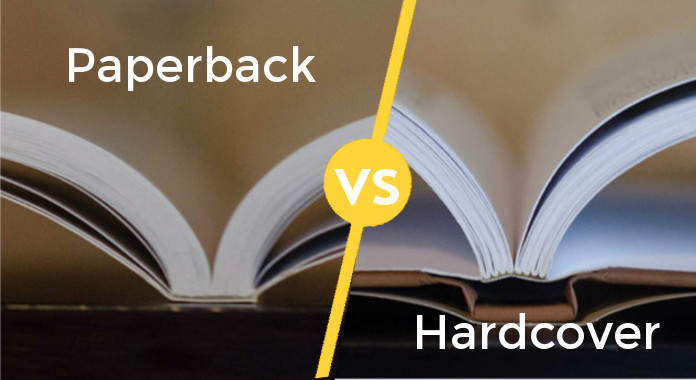


Similarly, if you’re a business looking to create a luxury catalogue or annual report for top clients, it may well be worth opting for a hardback book due to its connotations of being exclusive. This means hardback books are often sought after by collectors, who are willing to pay a little more to get an exclusive option. Many hardback publications are released as special, limited editions, meaning they often have enticing designs that differ from the general release (usually a paperback edition). If you’re packing for a flight, paperback books also weigh less than hardback books, making them a preferable option for travellers with luggage weight limitations.

This means you can hold them for a long time and bend them slightly to fit them in your bag. Paperbacks are often an easier option for reading and transporting, because they’re a lot lighter and more flexible than hardback books. Hardback books also include endpapers, which are an additional sheet of paper between the cover and the inside pages, acting as another barrier against potential damage. This makes them a lot less likely to bend, and keeps the pages from getting frayed.

On average in the UK, hardback books prices range from £15-£20, whereas you can pick up a paperback book for around a fiver.ĭue to their thick board cover, hardback books are far more durable than their paperback counterparts. Hardcover books are more expensive to produce than softcover books, however they also often retail at a higher price. Now we’ve got a clearer idea of what paperback and hardback books are, let’s recap the key differences between them. They are also less likely to become damaged over time, making them a great option for special edition publications. The paper cover is the part where the design is printed, and the thick cardboard case is what reinforces it.Īlthough more expensive to produce, hardback books are far stronger and more durable than paperback books. What elevates this style of book is its distinctive hardcover, which is usually made from a material called greyboard – a thick cardboard case with a paper cover glued over it. Like paperback books, hardback books (also known as hardcover books) are made from a ‘book block’ which is the inside pages glued together at the binding edge. It also means that the production of this type of book is cheaper! Because they’re bound to a paper cover, this makes the books a lot lighter and more flexible, which in turn makes them easier to hold, read and fit into a bag for travel. The inside pages are usually stitched together, before being glued to a cover. This type of book has a much thinner cover than a hardback book, usually made from thicker paper or card than the inside pages. In this quick guide, we’ll weigh up the benefits of both paperback books and hardcover books to help you come to the right decision.Ī paperback book, also known as a softcover or softback book, is characterised by its cover. Paperback books or hardcover books – what’s the difference and which style should you invest in? Whether you’re a new author in the process of publishing their first book or a company looking for a premium way to commemorate your achievements, creating the perfect book for your needs is a must.


 0 kommentar(er)
0 kommentar(er)
